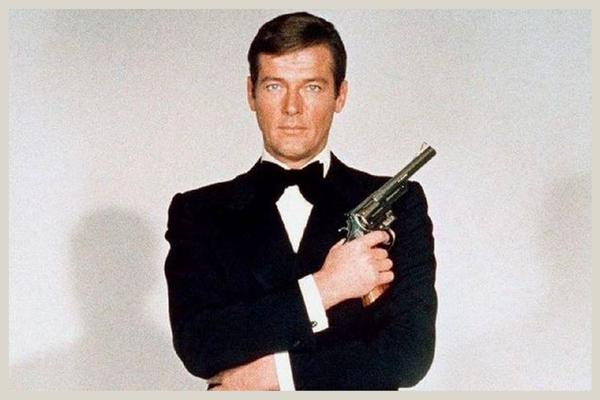Roger Moore – Bond, James Bond III
Roger Moore was a British actor who is best remembered for his suave, charming and effortless portrayal of James Bond in seven movies from 1973 to 1985.
He was the third actor to take on the role of 007 after Sean Connery and George Lazenby, and it’s said that Moore brought a more lighthearted approach to the role.
His first Bond movie was in Live and Let Die (1973), and he left Bond fans with some iconic moments throughout his tenure before hanging up his Walther PPK after starring in A View to a Kill in 1985.
Roger Moore had television success and was well known in the UK after appearing in The Saint and The Pretenders throughout the 1960s and early 1970s.
As well as starring as James Bond for 12 years, Moore was busy throughout his acting career which spanned from 1945 to 2017.

Roger Moore Before James Bond
Sir Roger George Moore was born on 14 October 1927 in Stockwell, London to George Alfred Moore and Lillian ‘Lily’ Pope. His father was a police constable and his mother, who was born in Calcutta, India, was a housewife.
Roger Moore had a working class upbringing, but his parents sent him to Battersea Grammar School, London to study. During World War II, he was sent to Devon, and finished his high school studies at Launceston College in Cornwall. He finished his schooling at Dr Challoner’s Grammar School in Buckinghamshire, before embarking upon.
After leaving school, Moore wanted to get into film and started an apprenticeship at an animation studio. It didn’t last long for the young Roger Moore, as he was soon released from his duties after messing up some animation cels.
However, luck was on his side after his dad started an investigation of a burglary at Director Brian Desmond Hurst’s house. He became friendly with the director and introduced his son to him and he was offered a part as an extra in the 1945 film Caesar and Cleopatra.
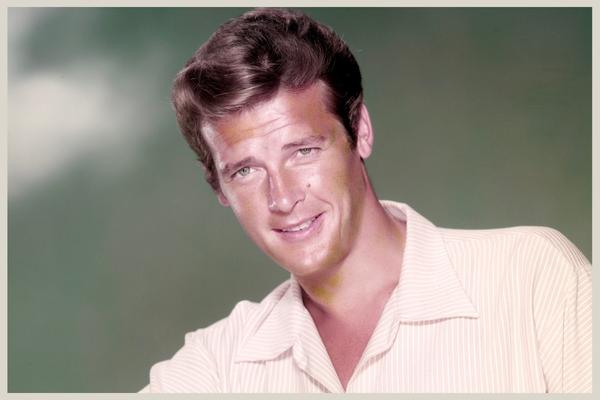
Hurst was impressed with Moore’s performance and offered to pay for him to study at Royal Academy of Dramatic Art (RADA) in London, where he studied alongside Lois Maxwell, who later became the first Miss Moneypenny actress.
After graduating the program in 1946, the 18-year-old Moore was called to do national service and served in the Royal Army Service Corps as a second lieutenant. He also married fellow RADA student Doorn Van Steyn that year.
Moore remained in the army for 3 years and eventually rose to captain and oversaw a depot located in Hamburg, West Germany. In this capacity, he worked for the CSE, the live entertainment arm of the British forces.
After leaving the army, acting roles were few and far between. But his toned physique and good looks ensured he got plenty of modelling gigs, appearing in Woman’s Own magazine as a doctor, and other gigs including knitwear and toothpaste companies.
In 1954, Roger impressed an MGM talent scout and the 24 year old moved to Hollywood. By now he was living with singer Dorothy Squires, a woman 12 years his senior, who became his second wife.
He signed a 7 movie contract with MGM and had minor roles in a few MGM films, including The Last Time I Saw Paris (1954) alongside Elizabeth Taylor. But each MGM film he starred in was a financial flop and he was relieved of his contract after only 2 years.
Moore got his first break in 1958 back in Britain, starring as Sir Wilfred of Ivanhoe in the TV series Ivanhoe. After this, Moore got some acting work with Warner Bros, but none were as successful as Ivanhoe.
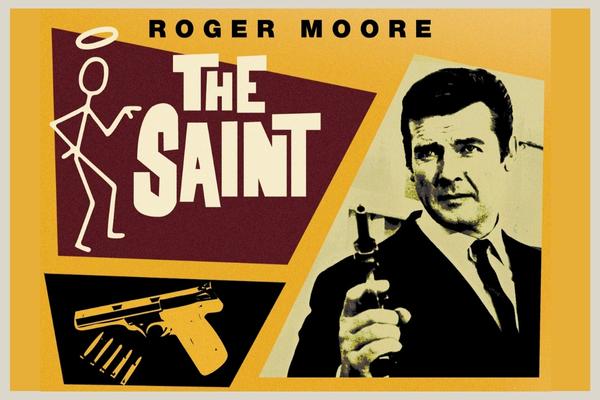
In 1962, Roger Moore got his biggest break to date, when he was cast to play Simon Templar in British mystery TV series The Saint. This ran for 6 series and 7 years and was one of the biggest TV shows in the UK in the 1960s. He also starred in 2 The Saint movies as Simon Templar during this time.
In 1969, Roger Moore married for the third time, finally tying the knot with girlfriend, Italian actress Luisa Mattioli after almost eight years and three kids together.
In 1971, Roger Moore was offered £1 million to star alongside American actor Tony Curtis for a series of The Persuaders, making him the highest-paid television actor in the world. The series was a commercial flop in the UK and America but successful throughout Europe.
Roger Moore as James Bond
Live and Let Die
Bond 8 Live and Let Die was the first film Roger Moore was cast as James Bond, and marked a fresh beginning all around.
In the movie Bond is sent to America and Caribbean Island San Monique to investigate the murders of 3 MI6 agents. He comes up against a mob boss Mr. Big in Harlem and New Orleans, and San Monique Dictator Dr. Kananga.
Bond meets a few Bond girls, and some old friends as he overcomes a voodoo occult, a henchman with claw hands, and a mob boss with an aid who uses Tarot cards to predict Bond’s every move, to bring down a drug empire.
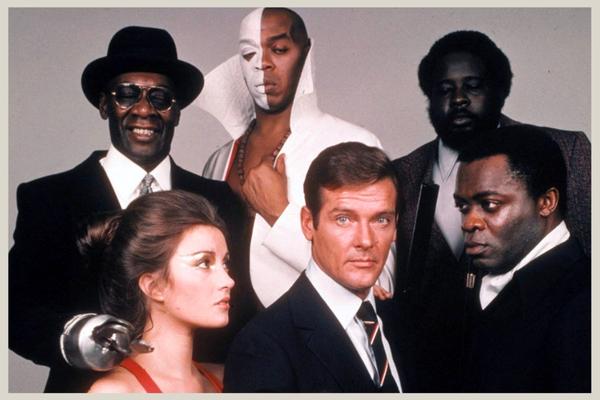
The film was a Box office success, but met with mixed reviews. Some saying Roger Moore ‘wasn’t satisfactory’ compared with Connery’s Bond, and even calling it an ‘unimpressive debut as James Bond.
It definitely wasn’t all bad, New York Times said Moore was a ‘handsome, suave, somewhat phlegmatic James Bond’ in his first appearance. While The LA Times said Moore was ‘a handsome and smoothly likeable successor to Sean Connery.’
Overall, the reviews were mixed, but mostly negative on the plot, which was too realistic for some. It seems like a mob boss with plans to dominate the heroin trade isn’t as good as global domination. We at BondScenes disagree, and we think the plot and performance of Roger Moore as James Bond were both excellent.
The Man with the Golden Gun
Just a year after Live and Let Die, Roger Moore was back as 007 in The Man with the Golden Gun (1974). Bond embarks on a quest to recover a deadly weapon known as the ‘Solex Agitator,’ which has the power to harness solar energy and potentially solve the world’s energy crisis.
It has been stolen by Bond villain Francisco Scaramanga, a mysterious professional assassin who has a personal vendetta against Bond. Bond’s investigation ends in a final duel with Scaramanga, which is supposed to be a shootout, but when Bond turns around Scaramanga has vanished.
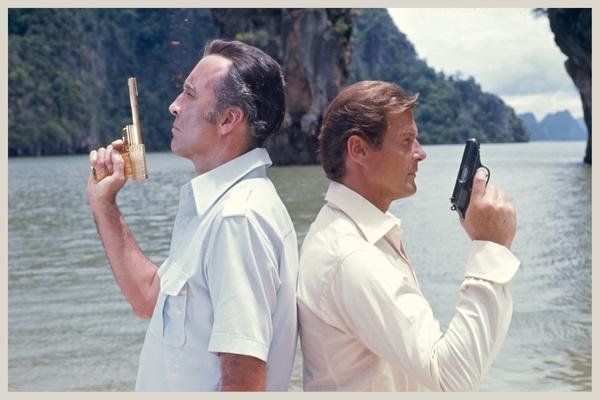
Henchman Nick Nack leads Bond into an intricate maze in Scaramanga’s hideaway on his private island, but Bond outwits him and kills Scramanga and retrieves the Solex Agitator.
As with all movies, The Man with the Golden Gun received mixed reviews. from The Guardian was far from complimentary of the film or Roger Moore, saying ‘The script is the limpest of the lot. And Roger Moore as 007 is the last man on earth to make it sound better than it is.’
While The Sunday Mirror was more complementary towards, Moore, saying, ‘What Sean Connery used to achieve with a touch of sardonic sadism, Roger Moore conveys with roguish schoolboy charm and the odd, dry quip.’
The Spy Who Loved Me
After mixed reviews of his first 2 Bond movies, Roger Moore’s third instalment The Spy Who Loved Me (1977) was met with a much more positive response from critics. Moore, himself, said it was his favourite Bond movie that he starred in.
As a mysterious force causes British and Soviet ballistic missile submarines to vanish, MI6 agent James Bond and his Soviet counterpart Major Anya Amasova must work together on an urgent mission to find the megalomaniac, Karl Stromberg, bent on starting World War III.
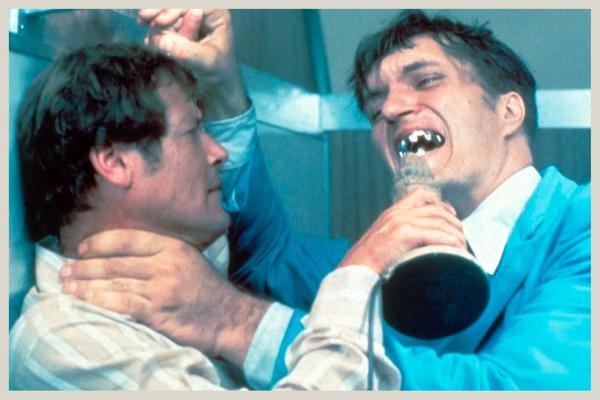
Bond and Anya must deal with Stromberg’s henchmen, who have been ordered to eliminate anyone who comes into contact with the microfilm. One of these is the formidable Jaws, a seven-foot towering giant with steel teeth.
The Spy Who Loved Me was Moore’s best received movie, but it wasn’t all complementary. With Gary Arnold of The Washington Post calling it ‘a tolerable disappointment,’ and claimed, ‘Once widely imitated and parodied by other producers, Bond films are now more likely to imitate themselves with decreasing effectiveness.
Other reviews were positive saying 007’s performance oozed ‘suave and sophistication,’ with Moore ‘giving his best performance in the series.’ It’s fair to say many believe this to be the best of the Roger Moore Bond films.
Moonraker
Moonraker was released in 1979, and was Roger Moore’s fourth time as James Bond. The plot follows Bond’s investigation of a hijacked space shuttle and his efforts to stop the villainous Hugo Drax from destroying humanity.
Bond teams up with CIA agent Holly to stop Drax’s plans and the two travel to outer space to foil his scheme. The film also features a return of the character Jaws, who was well-received. The action in the film is also praised, particularly the use of space in the second half of the film.

New York Times critic Vincent Canby called Moonraker ‘one of the most buoyant Bond films of all’ saying the movie was one of the best, and Roger Moore was ‘ageless, resourceful, and graceful as the character he inhabits.’
Entertainment Weekly wasn’t as positive, however, claiming Moonraker is ‘by far the campiest of all 007 movies.’ Many were impressed with the special effects, and of course the opening scene with Bond and Jaws skydiving is commonly thought of a one of the best action sequences in the Bond series.
For Your Eyes Only
After the over-the-top plot of Moonraker, Bond 12, For Your Eyes Only was more of a realistic investigation for 007.
When a ship sinks off the coast of Albania, the world’s superpowers compete to acquire the powerful A.T.A.C. system, which provides control over Polaris nuclear submarines. MI6 sends James Bond to investigate and he suspects a man named Kristatos of being responsible.
Bond forms an alliance with Bond girl Melina Havelock, who holds Kristatos responsible for her parents death, and Bond guilty of stealing her heart. Bond faces a race against time, including thrilling car chase in a Citroën 2CV, intense underwater battles over coral reefs, and a cliff-hanging attack on a mountaintop fortress.
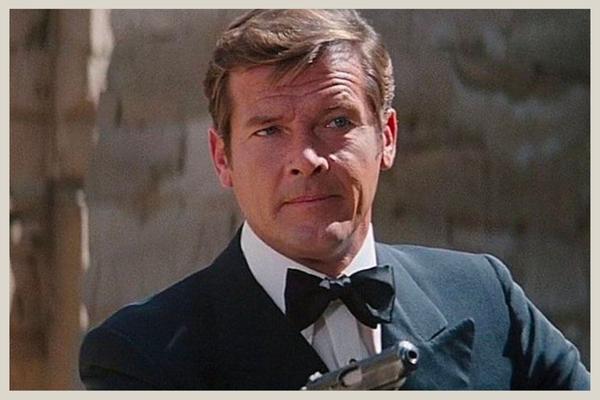
For Your Eyes Only received mostly negative reviews upon its release, with Time Out critic saying the movie had ‘no plot and poor dialogue, and Moore really is old enough to be the uncle of those girls.’
However, over time critics have become more positive on the movie, with Raymond Benson, the author of nine Bond novels, saying ‘it was Roger Moore’s best Bond film.’
Octopussy
In competition with unofficial Bond movie Never Say Never Again in 1983 Octopussy saw Roger Moore up against Sean Connery at the Box Office.
Investigating the murder of agent 009, James Bond finds himself on a thrilling mission to India where he meets an enigmatic businesswoman – Octopussy, who’s at the helm of a smuggling operation in disguise as a travelling circus.
Uncovering her true motives, Bond discovers that she is working with Afghan prince Kamil Khan and Soviet General Orlov. However, she sides with Bond after learning they had Khan has betrayed her. She then helps Bond foil their plan by detonating a nuclear bomb in West Germany.
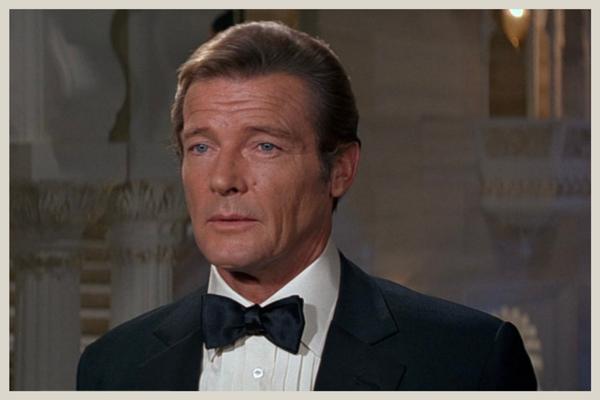
Octopussy was Roger Moore’s sixth Bond movie and like all movies the criticism was mixed. Gene Siskel from The Chicago Tribune said, ‘Octopussy has the most sustained excitement in a Bond film since You Only Live Twice.’
Kevin Thomas of the Los Angeles Times wasn’t as complimentary, however, giving a wishy washy review saying the film was pretty much ‘business as usual, no better or worse than most of its predecessors…’ and that he found it ‘amazing that the same old formula still plays.’
A View to a Kill
A View to a Kill was Roger Moore’s seventh and final Bond movie, making him the oldest James Bond even still.
James Bond uncovers a dangerous plot when he recovers a microchip from the body of his deceased colleague in Russia. The technology has sinister implications, and upon further investigation, 007 is pitted against villain Max Zorin – the head of Zorin Industries – as well as his formidable Amazonian bodyguard May Day.
They’re planning world domination through destruction on an immense scale that will eradicate their opposition without mercy. Bond stops the destructive explosion from occurring, and their ultimate confrontation takes place on San Francisco’s Golden Gate Bridge, where Zorin ultimately meets his demise.
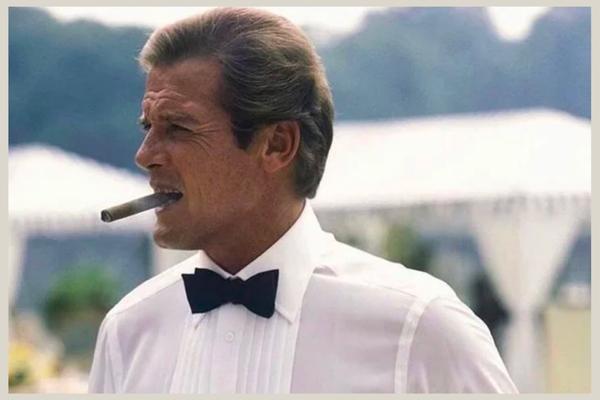
A View to a Kill met with mixed reviews,. A common critique was on Moore’s age – 57 years old when filming. Paul Attanasio of the Washington Post said, ‘Moore isn’t just long in the tooth—he’s got tusks, and what looks like an eye job..’ and said he doesn’t seem ‘believable anymore in the action sequences, even less so in the romantic scenes.’
A View to a Kill is a good film with some great scenes, but even Moore says it was his least favourite Bond film, and he was mortified when he dicovered he was older than his female co-star’s mother.
Roger Moore – Life After Bond
After Roger Moore hung up his Walther PPK he had parts in several movies and television shows, but nothing major, unless you call Spice World a major film?
Life after Bond for Roger Moore was more about his humanitarian work, and was actively involved in various charitable causes throughout his life. He was also a patron of the Children’s Hospice Association and helped to raise millions for various children’s charities.
In 1991, he became a Goodwill Ambassador for UNICEF, and served as a member of the organization’s Executive Board. And for over 2 decades, he travelled to numerous UNICEF projects all around the world, making trips to Ghana, Honduras and the Philippines.
In 2012, he was awarded UNICEF UK’s prestigious Lifetime Achievement Award. His efforts with Kiwanis International’s Worldwide Service Project have also had staggering results – raising a remarkable $91 million to help eradicate iodine deficiency worldwide.
In 2003, Roger Moore was knighted by Queen Elizabeth II in recognition of his humanitarian services.
Roger Moore became an author in 2008, releasing his autobiography My Word is My Bond. His personal memoirs invites readers to embark on a journey with the acclaimed actor from his childhood days, through his remarkable acting career, all the way up to today where he is an esteemed show business icon and UNICEF’s celebrity ambassador.
Roger Moore – Bond, James Bond III
From the moment Roger Moore first graced the screen as 007, he quickly became a global sensation thanks to his wit, style, and smoothness.
His performance in each film captivated audiences worldwide, with reviews praising his ability to bring light-hearted fun but still maintain all the classic characteristics of a heroic secret agent.
Of course it wasn’t all praise, especially in his latter days, as nobody likes an ageing Bond. that said, he provided us with some of the most memorable Bond scenes in the franchise’s 6 decades.
The gentleman with the looks and charm had it all, and even though he was turned down when he first thought about casting for Bond, it was only a matter of time before he actually became 007.
Did he outstay his welcome? Some might say, but as much as any other actor to play 007, he can rightfully say he will always be Bond, James Bond.


